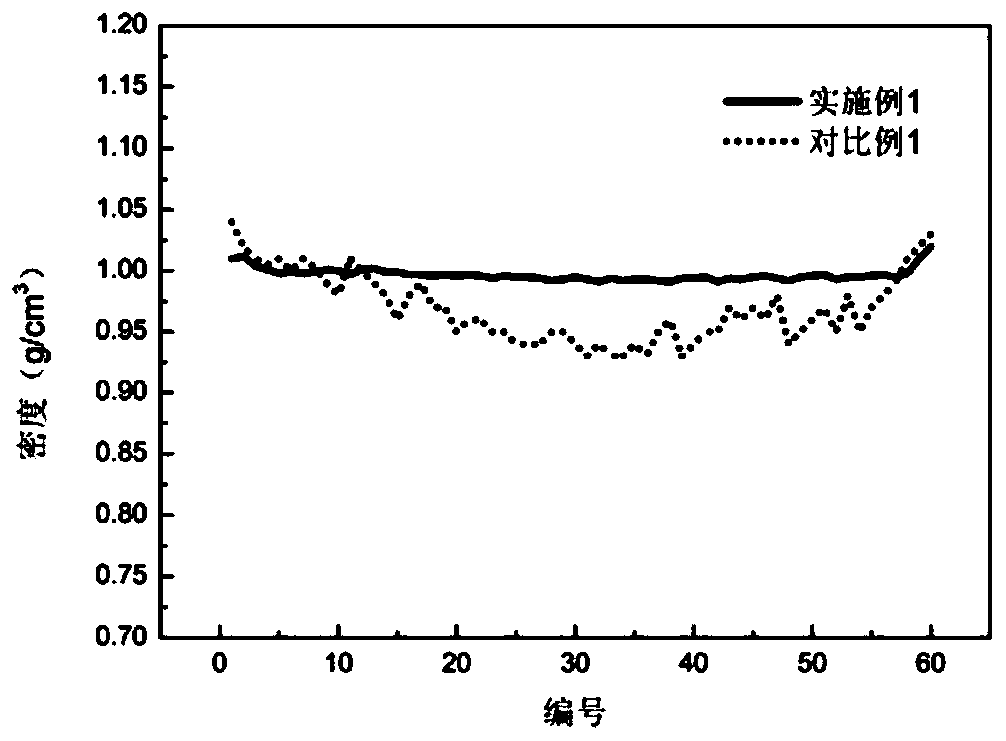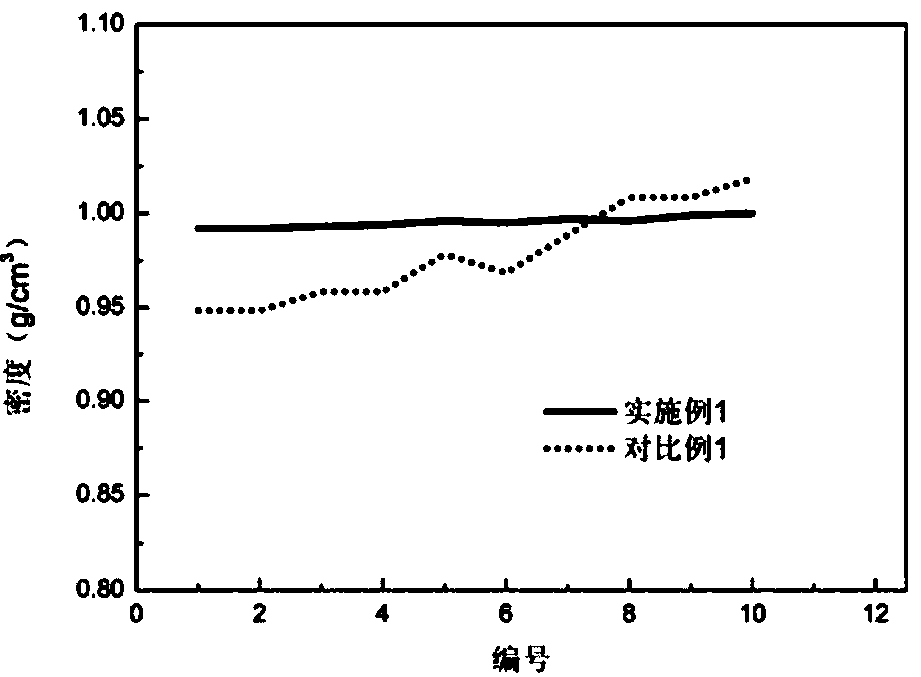A kind of polishing pad, polyurethane polishing layer and preparation method thereof
A technology of polishing layer and polyurethane, which is applied in the direction of manufacturing tools, metal processing equipment, grinding machine tools, etc., to achieve excellent polishing effect, improve uniformity, and good uniformity
- Summary
- Abstract
- Description
- Claims
- Application Information
AI Technical Summary
Problems solved by technology
Method used
Image
Examples
preparation example Construction
[0050] In the raw materials for the preparation of the prepolymer, the polyfunctional isocyanate includes but not limited to one or both of aromatic isocyanate and aliphatic isocyanate. It is preferable to use 90 mol% or more of aromatic isocyanates, more preferably 95 mol% or more, and especially preferably 100 mol%.
[0051] Aromatic isocyanates may be aromatic diisocyanates. Aromatic diisocyanates include but are not limited to 2,4-toluene diisocyanate, 2,6-toluene diisocyanate, 2,2'-diphenylmethane diisocyanate, 2,4'-diphenylmethane diisocyanate, 4 , one of 4'-diphenylmethane diisocyanate, 1,5-naphthalene diisocyanate, p-phenylene diisocyanate, m-phenylene diisocyanate, p-xylylene diisocyanate, m-xylylene diisocyanate or more.
[0052] The aliphatic isocyanates may be aliphatic diisocyanates. The aliphatic diisocyanate includes but not limited to one or more of ethylene diisocyanate, 2,2,4-trimethylhexamethylene diisocyanate, and 1,6-hexamethylene diisocyanate. The ali...
Embodiment 1
[0088] The present embodiment provides a kind of polishing layer, and its preparation method is as follows:
[0089] Step 1. Treatment of the isocyanate-terminated polyurethane prepolymer (or prepolymer for short).
[0090] 100 parts by mass of the isocyanate-terminated prepolymer obtained by the reaction of toluene diisocyanate and polytetrahydrofuran (containing 8.75 to 9.05% by mass of unreacted NCO groups) was heated to 80°C, and degassed under vacuum (-0.095MPa) for 2 hour, so that the gas and small molecular compounds in the prepolymer are removed; then add 0.77 parts by mass of hollow microporous polymer with an average diameter of 40 microns, and make the hollow microporous polymer evenly disperse in the prepolymer under stirring , degas again under vacuum (-0.095MPa) for 2 hours, then lower the temperature to 50°C, and set aside;
[0091] Step 2, preparation of curing agent composition.
[0092] Heat 23.27 parts by mass of MOCA to 116°C to completely melt into a cle...
Embodiment 2~11
[0111] Using the same process as in Example 1, selecting different types of aliphatic diamines and prepolymers with different NCO contents, hollow microporous polymers with different average diameters, and different chain extension coefficients to obtain polishing layers with different effects , the proportions of each raw material and the results are summarized in Table 1 and Table 2. The amounts of all materials are parts by mass.
[0112] Table 1 Polyurethane polishing layer raw materials
[0113]
[0114] Table 2 Physical and chemical properties of polyurethane polishing layer
[0115]
[0116]
PUM
| Property | Measurement | Unit |
|---|---|---|
| density | aaaaa | aaaaa |
| Shore hardness | aaaaa | aaaaa |
| density | aaaaa | aaaaa |
Abstract
Description
Claims
Application Information
 Login to View More
Login to View More - R&D
- Intellectual Property
- Life Sciences
- Materials
- Tech Scout
- Unparalleled Data Quality
- Higher Quality Content
- 60% Fewer Hallucinations
Browse by: Latest US Patents, China's latest patents, Technical Efficacy Thesaurus, Application Domain, Technology Topic, Popular Technical Reports.
© 2025 PatSnap. All rights reserved.Legal|Privacy policy|Modern Slavery Act Transparency Statement|Sitemap|About US| Contact US: help@patsnap.com



